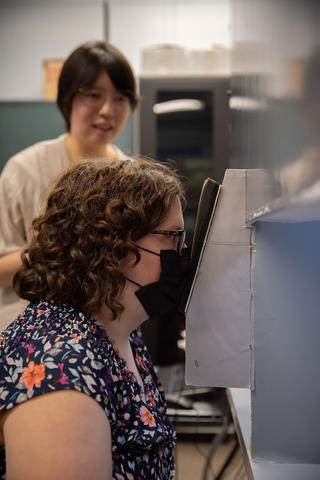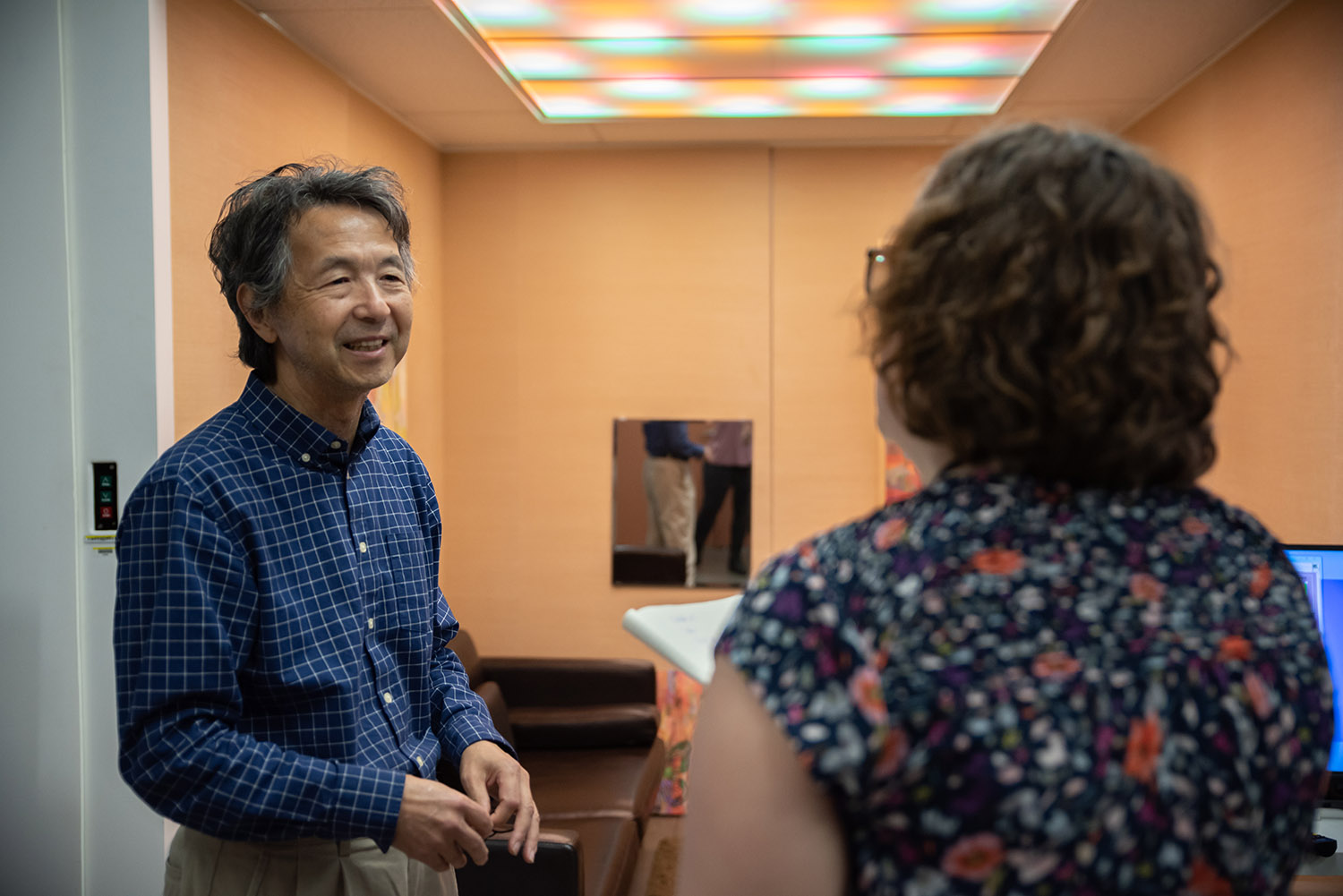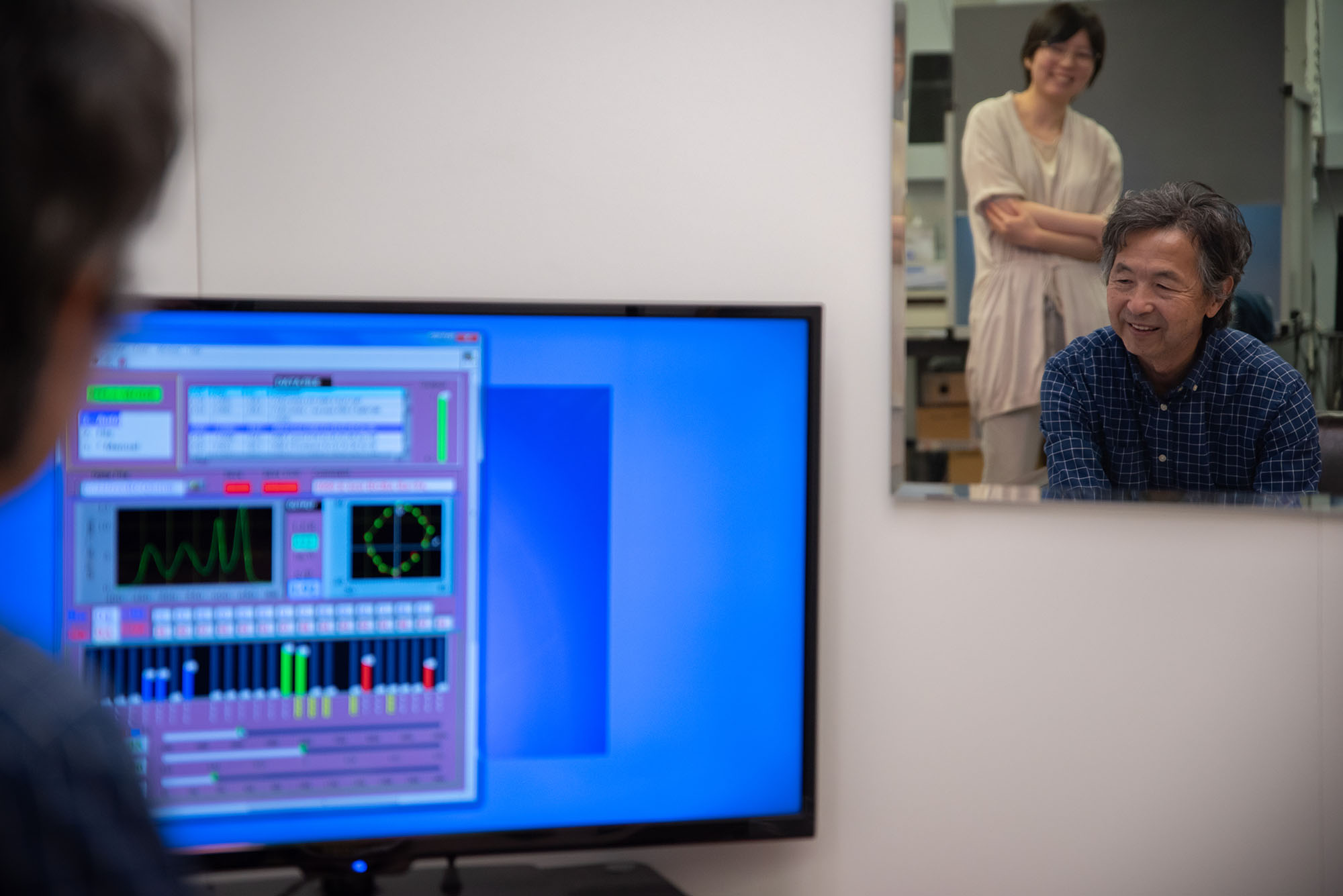He clicked the remote again, and a pleasant, orange hue began to illuminate the room. He had me look at my face in the mirror. Much better. (As a nearly middle-aged person with an increasingly complex skin-care routine as I age, I’m happy this scientific advancement in lighting exists!)
Jane explained to me after the experiment that there is no “right” answer, but there are answers they expect you to give based on the lighting in any given round. Jane said my answers were fairly close to what she expected.
On a recent Friday afternoon, I visited the lighting lab at NIST’s campus in Gaithersburg, Maryland. Yoshi started by taking me on a tour of the space. With fluffy rugs and colorful artwork on the walls, it’s much nicer than any other government office I’ve worked in or visited.
Jane then showed me to the booth where my color perception would be put to the test. First, I had to pass a test of my color vision and an additional test to check that the blue light filter on my glasses wouldn’t affect my color vision. I passed both with, um, flying colors.
On the ceiling, the lab features a lighting fixture that can be changed with the press of a button on a remote. The room simulates how lighting would look in a typical living room.
I’m glad to know I may play a very small part in updating lighting standards to fit our modern preferences and today’s lighting technology.
After a period of adaptation, the brightness I perceived on the two sides gradually converged. After adapting my eyes to the gray background, Jane placed one square sample of a certain color on the side of the booth with less light. The other side had more light, and she placed a board with 20 similar color samples there. I had less than 10 seconds to identify the closest match from the 20 samples. The time limit prevented my eyes from adapting to the sample color other than gray. She switched colors, and we started again.
However, someone has to pay for this content. And that’s where advertising comes in. Most people consider ads a nuisance, but they do serve a useful function besides allowing media companies to stay afloat. They keep you aware of new products and services relevant to your industry. All ads in Quality Digest apply directly to products and services that most of our readers need. You won’t see automobile or health supplement ads.
So please consider turning off your ad blocker for our site.
I’m not just here for a tour, though. I’ve signed up to participate in an experiment on how different types of lighting conditions affect our perception of colors. NIST employees, interns, and even family and friends of our employees sign up to participate. The only requirement is to be an adult with normal color vision (glasses or contacts are fine).
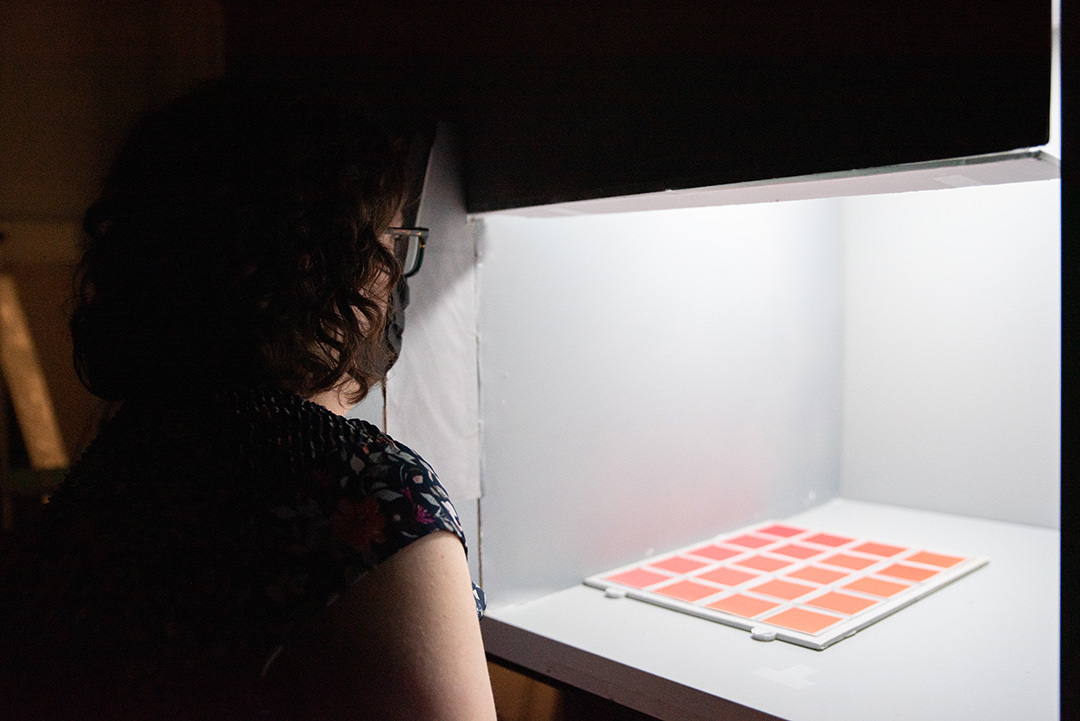
I had just a few seconds to match up colors in an experiment to test my color perception under different lighting conditions. Credit: R. Wilson/NIST
He clicked the remote, and a harsh, bright light came over us. I looked in the mirror at my washed-out face.
We also all interpret colors a little differently, even with the same lighting.
I told Jane that yellow was a particularly challenging color for me to match. The yellows all looked like the tiniest bit of difference in shades of a highlighter to me. That may be one way my color perception is different from others’.
NIST’s research is probably already reflected in your home or workplace’s lights. This research may help illuminate everyone’s path toward better lighting in the years to come.
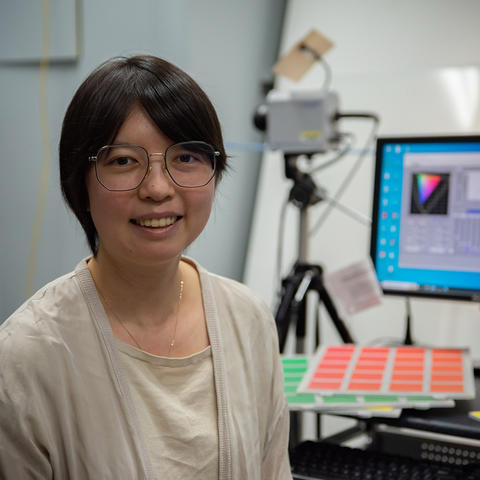
NIST postdoctoral researcher Jane Li will use the results of the color perception study to create statistical models that could influence future international standards for lighting. Credit: R. Wilson/NIST
Setting the standard for modern lighting
Remember the social media controversy over the color of a dress that everyone seemed to have a different opinion on? That’s a lighthearted example of how illumination can affect the things we see. But this is serious science. How our eyes see color under different conditions can affect such things as how health professionals read medical imaging scans.
I’m one of 20 adults who will do the same experiment over the course of the month. I asked Jane how they figure out the demographic breakdown of their participants. She said that in her previous research, she found no real difference in color perception based on gender. Some other studies have shown women can outperform men in distinguishing subtle color differences.
Published: Monday, July 31, 2023 – 12:02
